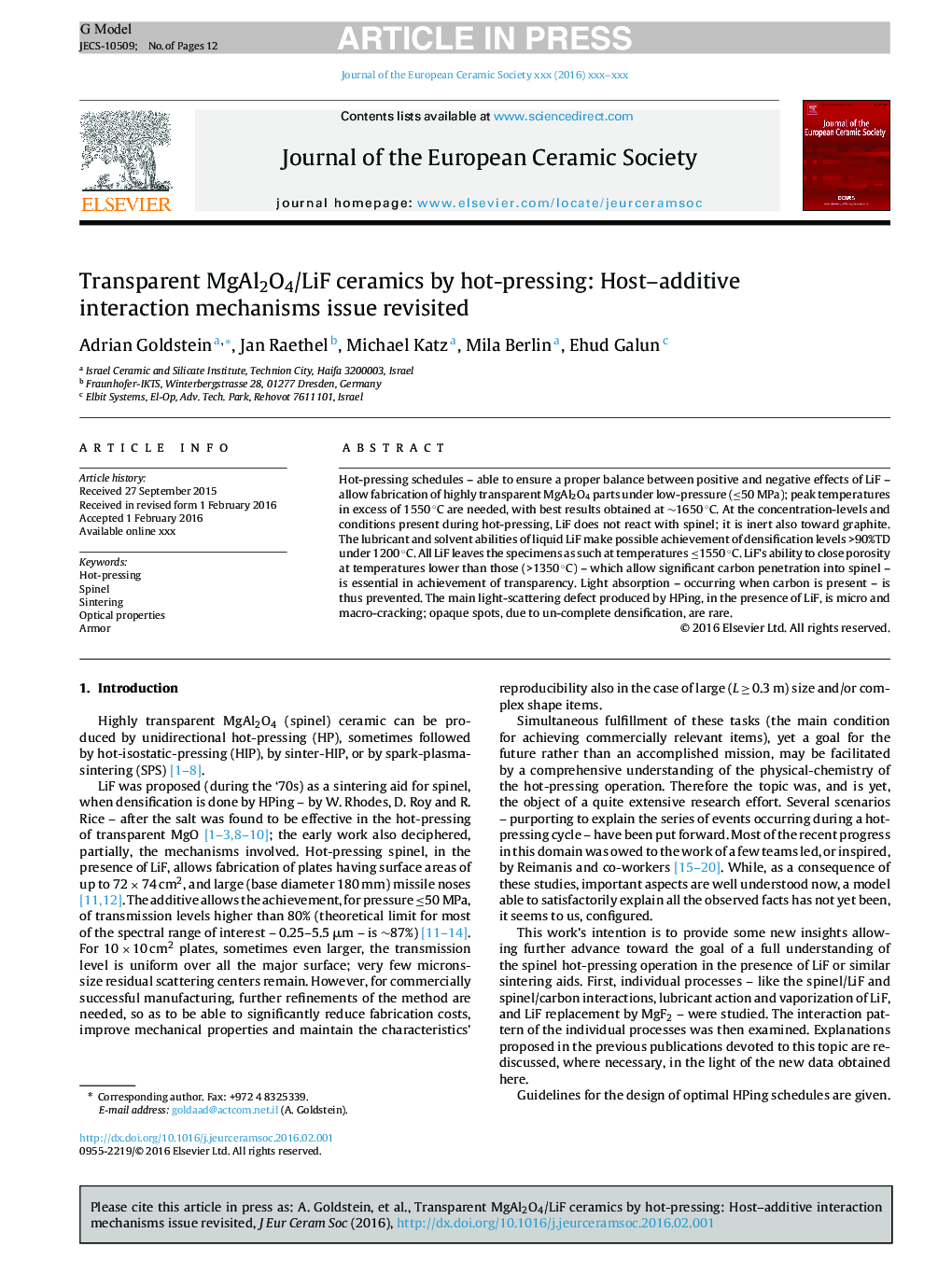| Article ID | Journal | Published Year | Pages | File Type |
|---|---|---|---|---|
| 10629294 | Journal of the European Ceramic Society | 2016 | 12 Pages |
Abstract
Hot-pressing schedules - able to ensure a proper balance between positive and negative effects of LiF - allow fabrication of highly transparent MgAl2O4 parts under low-pressure (â¤50 MPa); peak temperatures in excess of 1550 °C are needed, with best results obtained at â¼1650 °C. At the concentration-levels and conditions present during hot-pressing, LiF does not react with spinel; it is inert also toward graphite. The lubricant and solvent abilities of liquid LiF make possible achievement of densification levels >90%TD under 1200 °C. All LiF leaves the specimens as such at temperatures â¤1550 °C. LiF's ability to close porosity at temperatures lower than those (>1350 °C) - which allow significant carbon penetration into spinel - is essential in achievement of transparency. Light absorption - occurring when carbon is present - is thus prevented. The main light-scattering defect produced by HPing, in the presence of LiF, is micro and macro-cracking; opaque spots, due to un-complete densification, are rare.
Related Topics
Physical Sciences and Engineering
Materials Science
Ceramics and Composites
Authors
Adrian Goldstein, Jan Raethel, Michael Katz, Mila Berlin, Ehud Galun,
